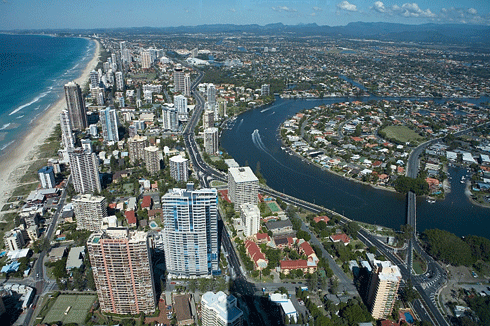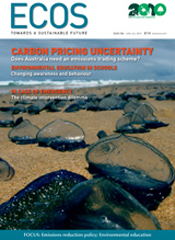
|
Published:
Planning versus reacting to the risk of future climate change
When authorities need to allocate tax-payer funds or formulate policy to deal with the impacts of future climate change, they are presented with myriad uncertainties. How high will temperatures or sea levels rise, and when? Who will feel the effects first? How successful will global attempts to cut greenhouse gas emissions be?

|
|
The many low-lying canal developments along the Gold Coast would be especially vulnerable to extreme storm surges. Credit: HighlanderImages
|
Due to the complexity and scale of climate change, we can never know the actual impacts until they happen, or until we have collected much more information than we have at present.
In the meantime, when it comes to adapting to rising sea levels, researchers with CSIRO’s Climate Adaptation Flagship are attempting to compensate for the uncertainties with a mix of economics, climate science and social theory. This provides decision makers with a more rational basis for managing risk.
‘Policy makers are looking for results now,’ comments CSIRO researcher, Dr Ryan McAllister.
The CSIRO team has produced a preliminary report looking at the costs of coastal flooding and sea-level rise along 240 kilometres of coast in south-east Queensland. The region was selected because it is vulnerable to rising sea levels and storm surges, and has high numbers of at-risk properties and a rising population.
The report estimates that if a 1-in-100-year storm tide of 2.5 metres were to strike the region today, the one-off cost of damage to residential buildings alone would be $0.91 billion. Add to this the money spent on household clean-ups and finding alternative accommodation for the displaced, and the cost rises to $1.12 billion.
By 2030, sea-level rise could push the height of a 1-in-100-year storm surge to 2.7 metres. When researchers considered predicted growth in building and population, they found the much higher number of properties in the at-risk zone by 2030 would see the clean-up bill rise to $1.97 billion. However, if building and planning rules were tightened to stop extra development in at-risk areas, the damage cost would drop to $1.28 billion.
According to Dr McAllister, the accuracy of the preliminary report – produced in consultation with the Federal Department of Climate Change and Energy Efficiency – is constrained by the lack of detailed, current data.
‘Despite the uncertainty, it seems logical to stop building in vulnerable areas that are already susceptible to sea-level rise,’ he says. ‘Why risk building in places potentially at risk?’
He hopes the research will kick-start debate about investments in climate adaptation measures, such as retrofitting homes, raising physical barriers near housing developments, and tightening planning and design laws.
‘If you build a wall, it costs you money, but what you need to consider are benefits of that investment in terms of offsetting the costs of climate change over time,’ explains Dr McAllister.
‘Those costs are occurring through decades. You need to know if that wall you build is cost effective in offsetting the costs down the track.’
Although this research focuses on the economic costs and benefits of adapting to one particular climate change impact – damage to buildings and infrastructure from sea-level rise – Dr McAllister says this should only be viewed as a small part of the picture.
‘To unpack what climate change means, you need to think not just about the total cost, but the distribution of that cost,’ he says.
‘That is going to allow us to understand the economics of adaptation, and also understand who feels which impacts, and when they feel them.’
More information:
Wang X, Stafford Smith M, McAllister RRJ, Leitch A, McFallan S and S Meharg (2010). Coastal inundation under climate change: a case study in South East Queensland. Report prepared for the South East Queensland Climate Adaptation Research Initiative. www.csiro.au/science/coastal-inundation



